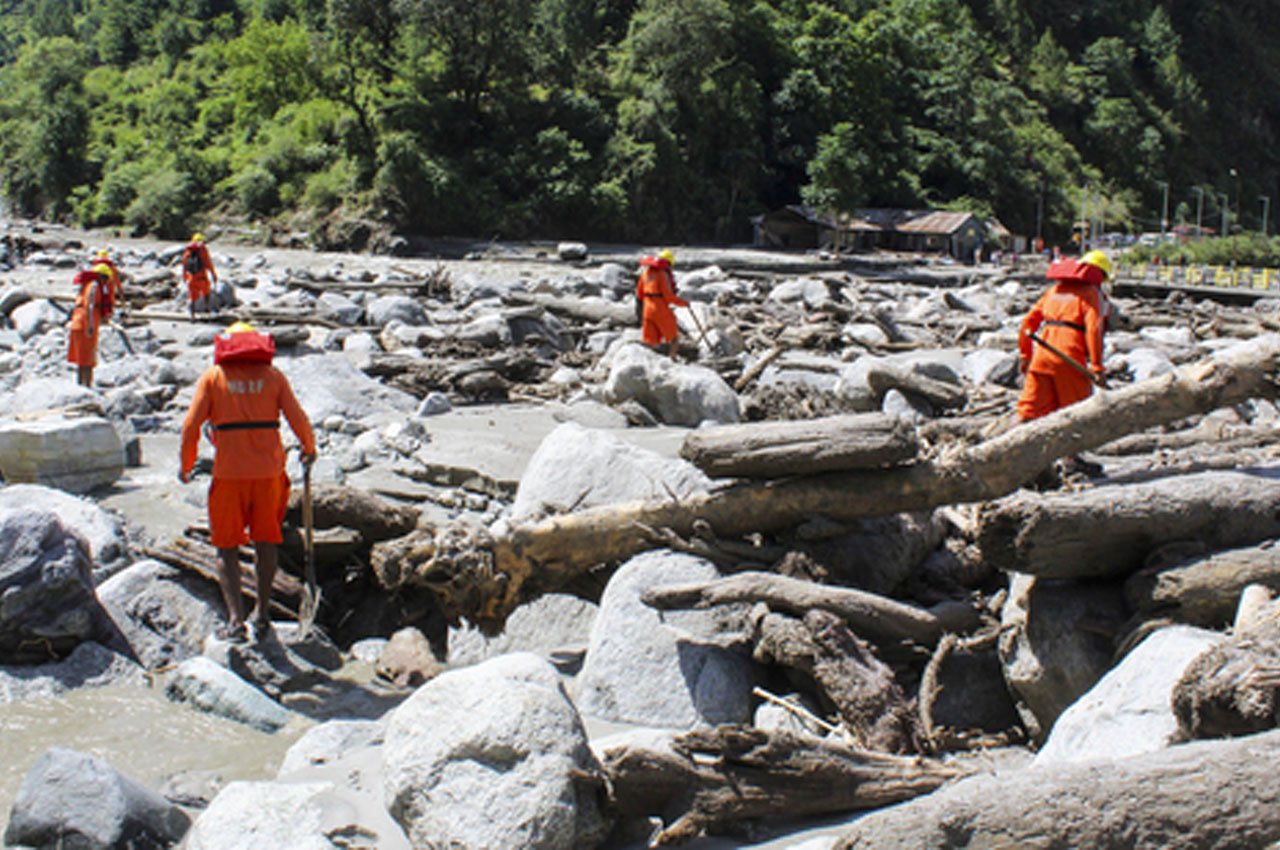Himachal Pradesh Flash Floods, Rescue Operations in Full Swing Photo Credit: HT
The death toll has risen to five in the wake of devastating flash floods triggered by a cloudburst in Himachal Pradesh, with rescue operations in full swing across the affected regions of Kangra and Kullu. Torrential rains and sudden cloudbursts led to the flooding of rivers and destruction of temporary shelters, roads, and power infrastructure, prompting urgent deployment of NDRF and state teams as multiple people remain missing.
According to Economic Times, in Kangra, the worst-hit district, the cloudburst occurred near Dharamshala, sweeping away temporary shelters of laborers working on an under-construction hydroelectric project. Eight workers were reported missing soon after the incident. By the following morning, three bodies had been recovered, one survivor was rescued, and four others remained untraceable. The survivor was found clinging to debris nearly a kilometer downstream. Similar scenes unfolded in Kullu district, particularly in the Sainj Valley, where three individuals were swept away earlier in the week due to flash flooding. Rescue teams continue to search in the region with limited visibility and challenging terrain adding to the difficulties.
Eyewitness accounts and early reports described how the torrents of water from the cloudburst engulfed homes, washed away roads, and destabilized power and communication lines. In Kullu, schools and bridges faced partial damage, while multiple rural homes were completely destroyed in the flood’s fury. The Himachal Pradesh Disaster Management Authority has estimated damages of nearly ₹60 lakh in the initial assessment, with further evaluations underway.
As rescue operations ramp up, coordinated efforts by the National Disaster Response Force (NDRF), State Disaster Response Force (SDRF), district police, and local volunteers are underway. The authorities have confirmed that roads in affected areas are being cleared swiftly to facilitate ambulance and relief vehicle movement. Power supply in vulnerable zones has been temporarily suspended as a precautionary measure, especially around hydroelectric plants and river embankments that are at risk of further erosion.
The Meteorological Centre in Shimla has issued a yellow alert for heavy rainfall in multiple districts, warning that further cloudbursts and landslides may occur over the next 48 hours. Chief Minister Sukhvinder Singh Sukhu has directed all district commissioners to remain on high alert and ensure that rescue and evacuation teams remain operational 24×7. He also emphasized the importance of safeguarding migrant laborers and residents in low-lying and riverside areas, especially those living in temporary or makeshift shelters.
Beyond loss of life and property, tourist safety has also emerged as a significant concern. Over 70 trekkers and tourists were stranded in Hamta Pass and Bakarthach due to sudden weather deterioration. Authorities were quick to act and airlifted or escorted all individuals to safer locations within hours of the alert. In Manali and Kandra areas, flash floods caused by runoff from small streams like the Manuni Khad and Jiva Nullah disrupted highways and damaged roadside colonies, although normal traffic flow was largely restored by late evening.
This is not the first time Himachal Pradesh has suffered the wrath of extreme monsoon events. Climate scientists have repeatedly pointed to the increasing frequency and intensity of cloudbursts in the Himalayan region, attributed in part to global warming and unchecked urbanization in ecologically fragile zones. The latest flood disaster reinforces the urgent need for better planning, early warning systems, and long-term mitigation strategies for such vulnerable regions.
Officials have reiterated their call for caution, urging residents and tourists to stay away from riverbanks, steep slopes, and flood-prone valleys until the monsoon stabilizes. Relief camps have been set up in safer zones with medical aid, food supplies, and temporary shelters for displaced families. Surveillance drones and thermal imaging equipment are being deployed to trace the remaining missing persons.
As Himachal Pradesh reels from the aftermath of this sudden weather-triggered disaster, the focus remains firmly on rescue, rehabilitation, and readiness. The events of the past few days are a stark reminder of how rapidly nature’s fury can unfold, and why building climate resilience in mountain states like Himachal must become a policy priority.
For more regional news click here
Follow us for latest updates:




